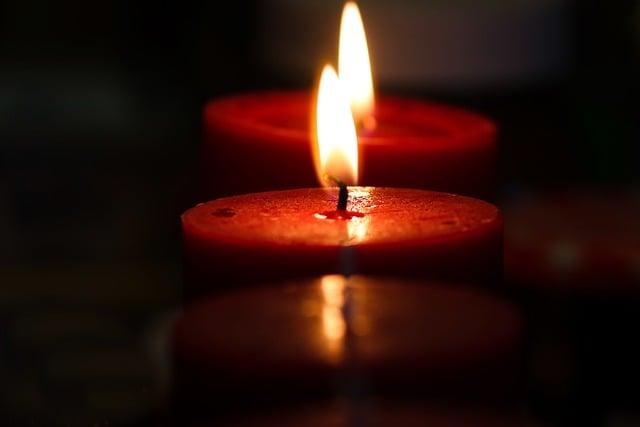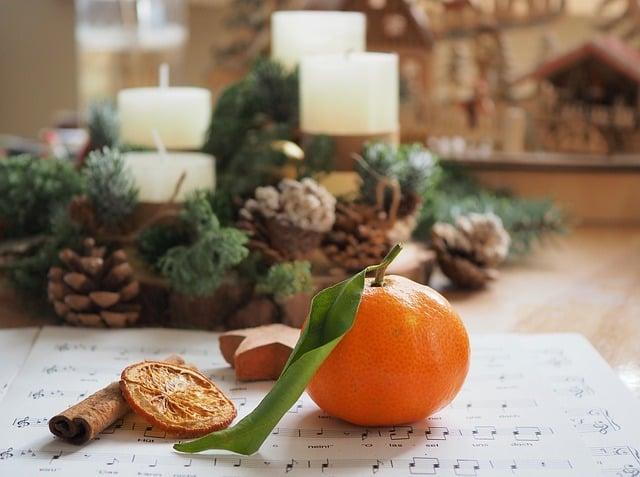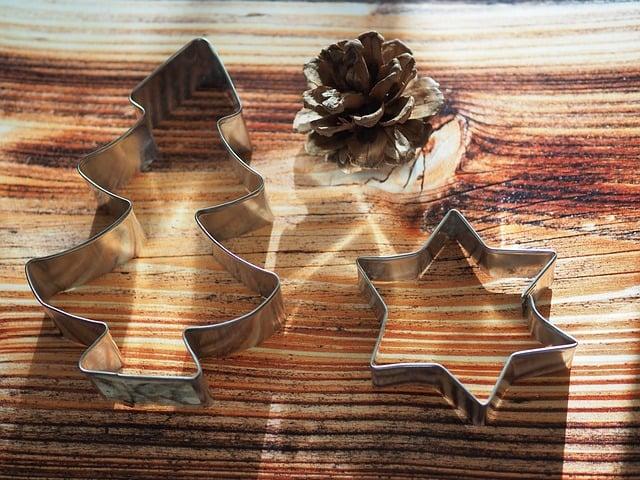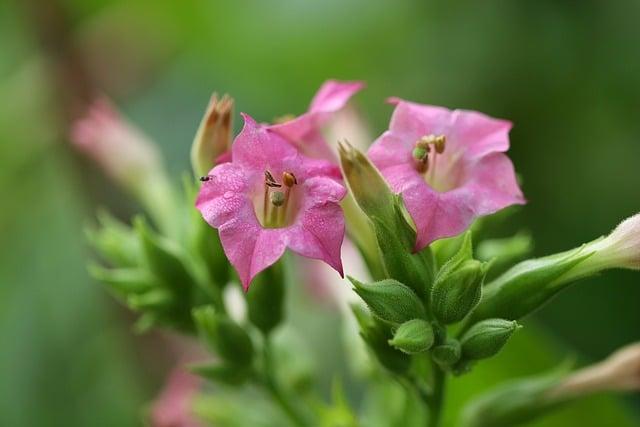In a quaint village, nestled between snow-capped mountains, the arrival of Advent brought a tapestry of colors that danced in the hearts of its people. The deep purple of the first week symbolized hope and preparation, a royal hue reminding them of the coming King. As the weeks unfolded, the vibrant pink of Gaudete Sunday burst forth, a joyful pause in the waiting. the pure white of Christmas dawned, representing peace and the fulfillment of promises. Each color wove a story of anticipation, uniting the villagers in a shared journey toward light.
Table of Contents
- Understanding the Significance of Advent Colors
- Exploring the Meaning Behind Each Color
- Incorporating Advent Colors into Your Celebrations
- Practical Tips for Reflecting on Advents Symbolism
- Q&A

Understanding the Significance of Advent Colors
The colors of Advent are rich in symbolism, each hue carefully chosen to reflect the themes of the season. **Purple**, often associated with royalty and penance, signifies a time of preparation and reflection as believers await the coming of Christ. This color invites the faithful to engage in self-examination and spiritual growth, reminding them of the importance of repentance in their journey. In some traditions, **blue** is used as an alternative to purple, symbolizing hope and expectation, further emphasizing the anticipation of the joyous celebration of Christmas.
As the season progresses, the use of **pink** on the third Sunday of Advent, known as Gaudete Sunday, introduces a shift in tone. This color represents joy and the nearing of the celebration, encouraging the faithful to rejoice in the promise of Christ’s arrival. Additionally, **white** is often used on Christmas Day, symbolizing purity and the light of Christ entering the world. Each color serves as a visual reminder of the spiritual journey undertaken during Advent, guiding the faithful through a season of waiting, hope, and ultimately, celebration.

Exploring the Meaning Behind Each Color
Colors have a profound ability to evoke emotions and convey messages, and during Advent, each hue carries its own unique significance. **Purple**, often associated with royalty and penance, serves as a reminder of the anticipation and preparation for the coming of Christ. It invites believers to reflect on their spiritual journey, encouraging a sense of humility and repentance. In contrast, **pink**, which appears on the third Sunday of Advent, symbolizes joy and hope. This shift in color signifies a moment of celebration amidst the solemnity of the season, reminding us to rejoice in the promise of Christ’s arrival.
Additionally, **white** is used on Christmas Day, representing purity and the light of Christ entering the world. It embodies the fulfillment of the Advent season, celebrating the birth of Jesus as a beacon of hope and salvation. The use of **green** throughout Advent, particularly in wreaths and decorations, symbolizes life and renewal, reflecting the eternal hope that comes with the promise of Christ. Each color, therefore, weaves together a tapestry of meaning, guiding the faithful through a season of reflection, anticipation, and ultimately, joy.

Incorporating Advent Colors into Your Celebrations
As the season of Advent approaches, incorporating its rich colors into your celebrations can enhance the spiritual atmosphere and deepen the meaning of the festivities. The traditional colors of Advent—**purple**, **pink**, and **white**—each carry significant symbolism that can be reflected in your decorations, attire, and even your table settings. For instance, using **purple** candles and ornaments can represent penance and preparation, inviting a sense of reflection and anticipation. You might consider adorning your home with **purple** fabrics, such as table runners or wreaths, to create a serene and contemplative environment.
In addition to purple, the **pink** candle, often lit on the third Sunday of Advent, symbolizes joy and hope. Incorporating this vibrant hue into your celebrations can uplift the mood and signify the nearing arrival of Christmas. Think about adding **pink** accents through floral arrangements or festive attire. **white**, representing purity and the celebration of Christ’s birth, can be beautifully integrated into your holiday decor with white lights, ornaments, or even a white tablecloth for your Christmas feast. By thoughtfully weaving these colors into your celebrations, you can create a visually stunning and spiritually enriching experience that honors the true essence of the Advent season.

Practical Tips for Reflecting on Advents Symbolism
As you delve into the rich symbolism of Advent, consider setting aside time for personal reflection. One effective method is to create a dedicated space in your home where you can meditate on the colors associated with this sacred season. Surround yourself with items that resonate with the meanings of each color, such as:
- Purple: Symbolizing penitence and preparation, use purple candles or cloths to remind you of the call to introspection.
- Pink: Representing joy and hope, incorporate pink elements to celebrate the third Sunday of Advent, known as Gaudete Sunday.
- White: Signifying purity and the coming of Christ, consider adding white flowers or decorations to your space as a visual reminder of the ultimate gift of the season.
Engaging with these colors can deepen your understanding of their significance. Try journaling your thoughts and feelings as you reflect on each hue’s meaning. Ask yourself questions like:
- What does the color purple evoke in my spiritual journey?
- How does the joy of pink inspire me to share love with others?
- In what ways does the purity of white challenge me to live a more Christ-like life?
By actively contemplating these colors and their symbolism, you can cultivate a more profound connection to the Advent season and its messages of hope, preparation, and joy.
Q&A
-
What do the traditional colors of Advent represent?
The traditional colors of Advent are purple and pink. Purple symbolizes penitence and preparation, reflecting the solemnity of the season as Christians prepare for the coming of Christ. Pink, used on the third Sunday of Advent, represents joy and anticipation, marking a shift towards celebration as Christmas approaches.
-
Why is purple the primary color of Advent?
Purple is often associated with royalty and dignity, signifying the coming of the King, Jesus Christ. It also reflects a time of reflection and repentance, encouraging believers to prepare their hearts for the celebration of His birth.
-
What does the pink candle in the Advent wreath signify?
The pink candle, lit on the third Sunday of Advent, is known as the Gaudete candle. It symbolizes joy and serves as a reminder that the season of waiting is nearing its end, inviting believers to rejoice in the hope of Christ’s arrival.
-
Are there other colors used in Advent celebrations?
While purple and pink are the most common, some churches may use blue as an alternative to purple, symbolizing hope and expectation. Additionally, white may be used during the Christmas season to represent purity and celebration as the birth of Christ is celebrated.
As we journey through Advent, let the colors guide our reflections and preparations. Each hue invites us to embrace hope, peace, joy, and love, illuminating our path toward the celebration of light and renewal. May these symbols enrich your season.

大家好,我是彼得潘,專業的手法身體治療師。我喜歡探索和研究各種主題,並透過與人工智慧的合作分享專業、實用、有趣的文章。我們定期進行人工審核,以確保內容的準確性。如果您發現文章中有任何不準確的地方,請隨時與我們聯繫,我們會及時糾正。您可以透過 [email protected] 與我們聯繫。



